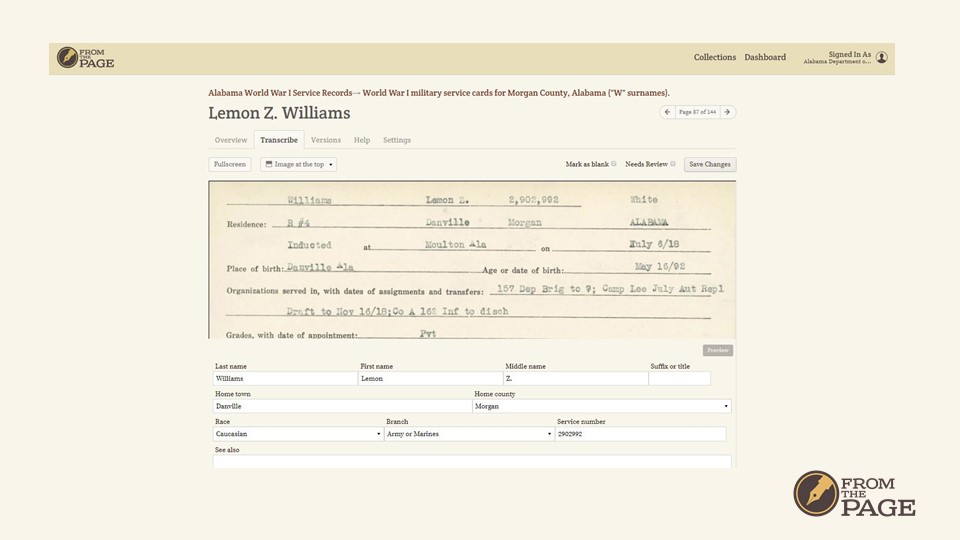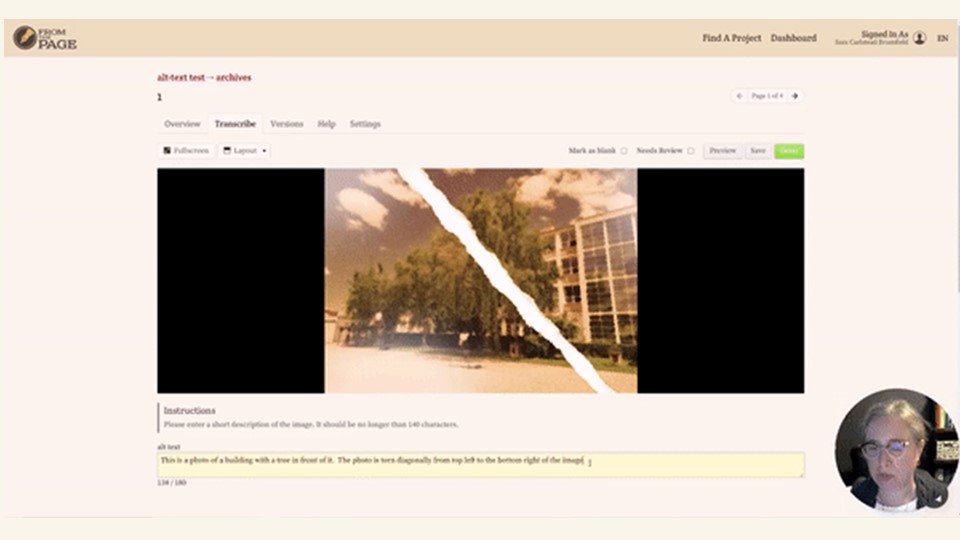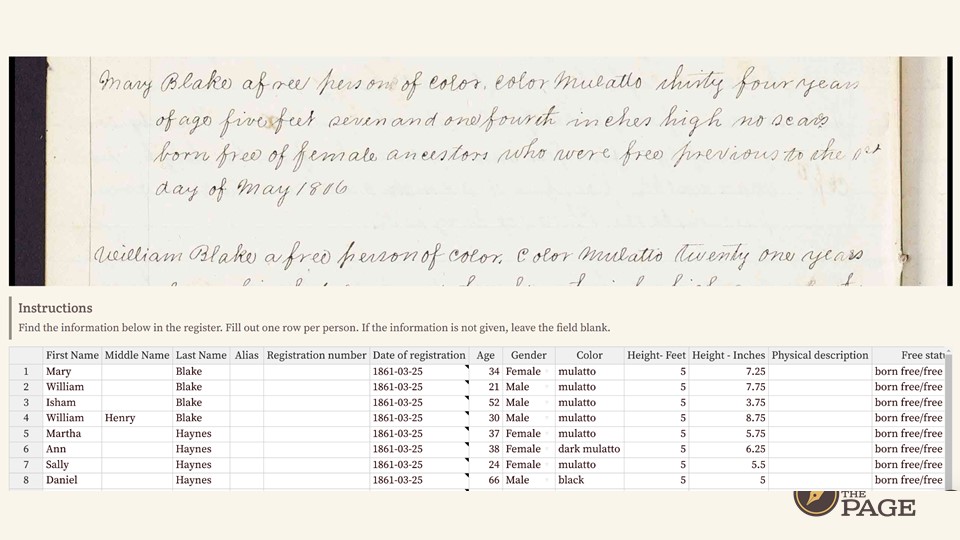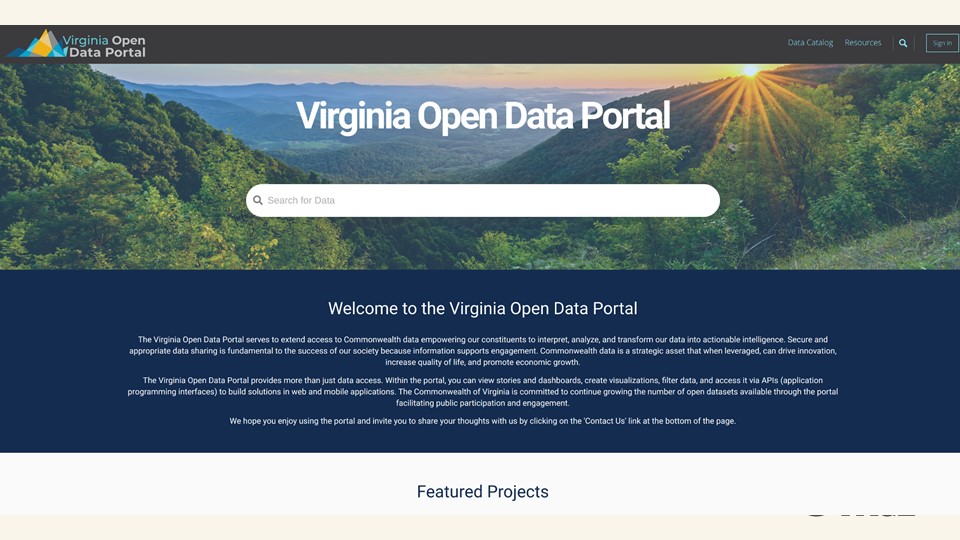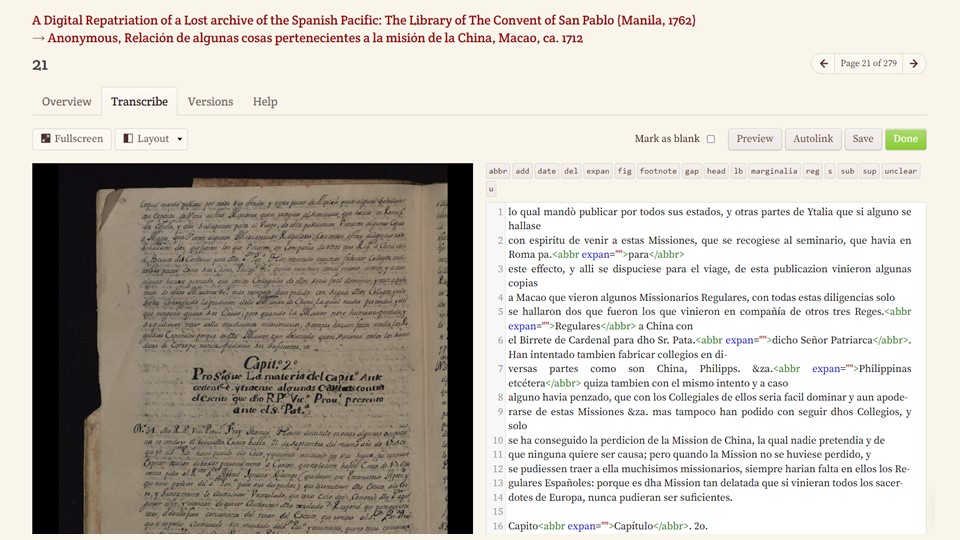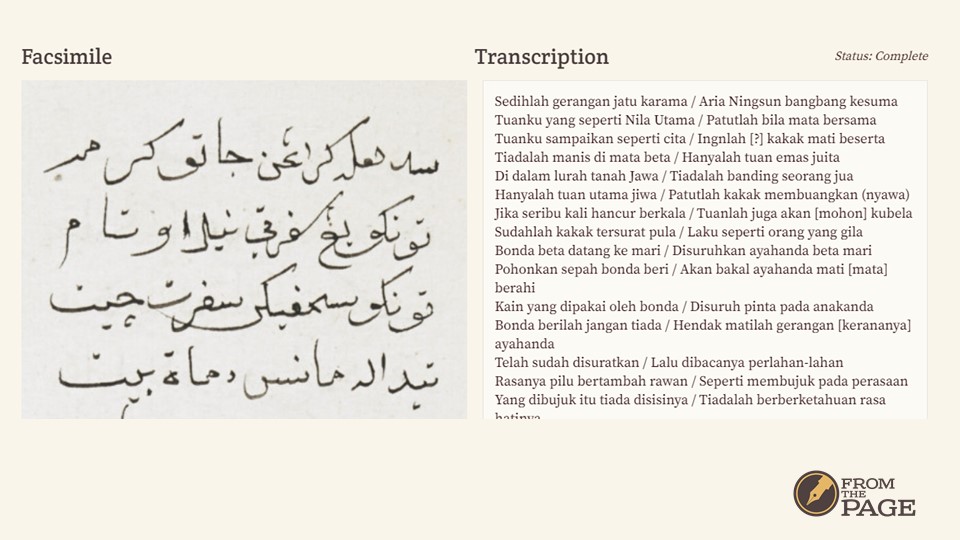Last February 2023, Ben and Sara Brumfield hosted a webinar to discuss everything you can do with crowdsourcing. The presentation, linked below in a video and embedded as slides, presents a list of things you can do with crowdsourcing, featuring different projects on FromThePage.
You can sign up for future webinars here.
Everything You Can Do With Crowdsourcing
Transcribe Handwritten Text
This is a recipe book from the North Carolina Archives; it’s a textual transcription, but the transcriber also went and found a modern representation of the recipe for baking soda on AllRecipes and linked it in the comments. It’s a deeper interaction with the text. There’s a classroom at Wake Forest that is transcribing early modern recipe books, and then students are taking their recipes and doing projects around them.
Once you have text, you can send it – with a button push – to text analysis tools like Voyant. This is a diary of an antebellum tobacco farm in rural Virginia.

Or other visualization tools like word trees. This was created by our friends at the George Washington Financial Papers, and it shows a lot of transactions with a Mrs. Bishop, who is a local midwife. The words are sized based on the number of occurrences in the text.
Index and Annotate Text
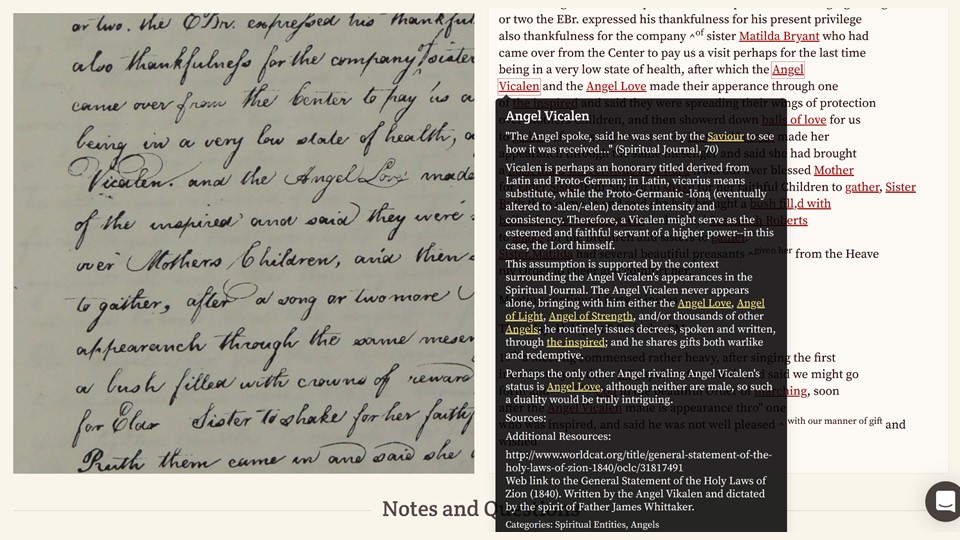
The Subjects tab can be treated like an index for your project.
Transcribe/Index Forms
This is a copyright form for art & graphics at the UK National Archives. Drop down, short fields, longer fields, inline instructions.
Two of the active transcribers on this project really go deep – there’s a link to the artwork at the Victoria & Albert museum; there’s a discussion about the writer – Poole – versus the actor – Toole.
Improve Findability
These are World War I service cards by the Alabama Department of Archives and History. The original cards were uploaded in sets by county and surname. So if you’re looking for James Myers, who is the last name in the “Dallas County – M Surnames” set, you don’t want to scroll through 260 cards to get to him.
So they set up an indexing project asking for certain fields from each card… They ran the project to coincide with the centennial of WWI and we were all thrilled when their volunteers indexed 111,000 cards in 3 ½ months.
Alabama’s goal was to add more details and then upload the cards as single items. With some post-processing of the spreadsheets they exported out of FromThePage and imported back into CONTENTdm, they did just that. Now users only retrieve results that include the search terms they entered.
Identify Photographs
This works best with a well scoped set of photographs. This example from the Indianapolis Public Library is of photographs of unidentified public parks. They use a controlled vocabulary of park names in a drop-down to let volunteers identify the park.
Having a limited number of possibilities makes these projects more successful – identifying people is much more difficult; you end up with a lot of “that looks like my grandpa”, which may not actually be the case. If there’s a known field of people or places, and perhaps you run the project privately with a set of experts, then you’re more likely to successfully identify photographs.
But even when you have a controlled list of parks, you may have material that doesn’t fit in, like this one.
In this park identification, the volunteer provided a link to the Google Street View of the same spot – the red brick building on the right is the same as the building on the left of the photograph.
Make Images Accessible
Another valuable use of crowdsourcing is creating alt text for images. By inviting diverse volunteers to describe images, we generate more accurate and inclusive descriptions, which improve accessibility for people with visual impairments.
When writing alt text, focus on describing the essential elements of the image that provide context and meaning. Be concise yet specific—mention key details like objects, actions, or people, without overloading on unnecessary details. Avoid phrases like 'image of' or 'picture of,' as screen readers identify it as an image.
Tailor descriptions based on the purpose of the image, and try to convey tone or emotion when relevant.
Index Records
Crowdsourcing can be incredibly effective for indexing records, especially large historical or archival collections.
Volunteers work together to tag, categorize, and label documents, making them easier to search and retrieve.
This community-driven approach not only speeds up the indexing process but also enhances the quality and richness of the metadata created.
Through crowdsourcing, massive sets of data become searchable and accessible to the public, researchers, and historians.
Prepare Data for Analysis
Crowdsourcing can be a powerful tool for preparing data for analysis, especially when tasks involve categorizing, labeling, or cleaning large volumes of data. This is the Virginia Untold/Free Negro Registers at the Library of Virginia, turning written descriptions into tabular data.
By involving a diverse group of contributors, crowdsourcing can help ensure that data preparation is faster, scalable, and incorporates various perspectives that enhance data accuracy and quality.
The Virginia Open Data Portal offers access to data from the Commonwealth of Virginia, enabling residents to interpret, analyze, and turn this information into actionable insights.
Crowdsourced contributors can assist in tagging or categorizing the data by reviewing documents and assigning relevant tags based on the content. This helps organize the data and enables researchers to filter and analyze specific topics or themes efficiently.
Crowdsourcing plays a significant role in preparing data for effective visualization.
Create Metadata
Ohio University used FromThePage’s metadata description form creation to create a form to describe dance posters in their collection.
Crowdsourcing can be used to create metadata for historical documents like this letter by involving multiple people in identifying and inputting relevant information.
This is a transcribed letter in a collection from Dartmouth about Arctic Exploration. Look at the transcribed text to create metadata.
Revise Metadata
You can also look at imported metadata – in addition to the images and/or the transcribed text – to revise and update metadata.
Correct OCR Text
Crowdsourcing helps correct OCR (Optical Character Recognition) text from images like this by enabling users to collaboratively edit and verify the transcriptions.
Crowdsourcing corrects OCR text from images like this by enabling volunteers to review and manually adjust the OCR-generated transcription to match the original content.
Translate Text or Transcriptions
Crowdsourcing allows native speakers or fluent individuals to contribute translations, improving language accuracy and fluency.
Transliterate/Normalize Text
Crowdsourcing is a powerful approach for transliterating or normalizing text, especially when dealing with historical documents, regional dialects, non-Latin scripts, or inconsistent spelling.
Crowdsourcing makes transliteration and normalization scalable and inclusive, leveraging diverse language expertise to convert and standardize text more accurately and efficiently than automated methods alone.
Ready to start a project on FromThePage? Schedule a call with Ben and Sara! You can also email Sara at sara@fromthepage.com.






